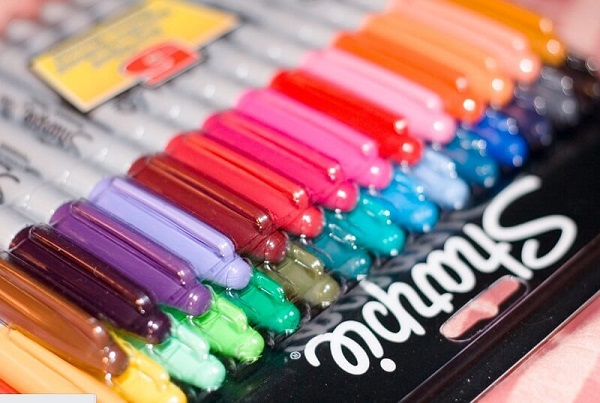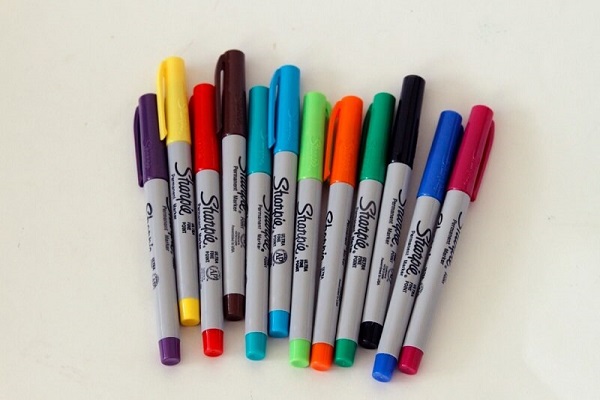Sharpie markers have secured a significant place in the realms of writing, art, and everyday utility due to their vibrant colors, versatility, and ease of use. These markers comprise a complex blend of solvents, dyes, and pigments, facilitating smooth ink flow and vivid coloration. However, concerns have surfaced regarding the presence of volatile organic compounds (VOCs) in Sharpies, leading to questions like, can you get high off Sharpies and potential health risks associated with their use, especially when ventilation is inadequate. This article aims to unravel the myths, clarify the truths, and explore the practical applications of Sharpie markers.
What Happens if you Sniff Sharpies?
Sniffing Sharpies fumes can lead to immediate effects due to the presence of volatile organic compounds (VOCs) in the ink. These fumes can cause short-term symptoms such as headaches, dizziness, nausea, and irritation of the eyes, nose, and throat. Prolonged or repeated exposure to these fumes, particularly in poorly ventilated spaces, poses a risk of more severe health issues, including damage to the respiratory system and potential harm to organs like the liver or kidneys. It’s crucial to avoid intentional inhalation of Sharpie fumes as these can result in harmful health consequences, necessitating the use of Sharpies in well-ventilated areas to minimize the inhalation of these potentially hazardous vapors.
Can You Get High Off Sharpies
Prolonged exposure to the volatile compounds in marker fumes can lead to a concerning drop in oxygen levels within the bloodstream. This oxygen deprivation triggers a cascade of physiological responses, causing sensations akin to an altered state of consciousness. However, this false sense of euphoria masks the imminent dangers of hypoxia, which include severe neurological impairment, organ damage, and, in extreme cases, fatal consequences. It’s crucial to emphasize that any perceived “high” from inhaling Sharpies is a dangerous illusion that can have devastating effects on both short-term well-being and long-term health.

Health Hazards of Sharpies Inhalation
Exposure to marker fumes, notably from products like Sharpies, poses significant health risks due to the volatile solvents present in these markers. Understanding these hazards is crucial to safeguarding personal well-being.
- Health Risks: Inhaling fumes from markers, including Sharpies, can lead to intoxication due to the presence of volatile solvents like xylene, toluene, and ethanol.
- Immediate Effects: Short-term effects of inhaling marker fumes include lightheadedness, dizziness, nausea, headaches, and a feeling of euphoria or disorientation.
- Long-Term Risks: Chronic exposure to these chemicals can damage the nervous system, liver, kidneys, and lungs. It may also lead to memory loss, coordination problems, and cognitive impairments.
- Addictive Nature: The chemicals in markers can be addictive, leading to a cycle of dependency and continued abuse.
- Legal Consequences: Huffing markers for the purpose of getting high is considered substance abuse and is illegal. Depending on the jurisdiction and circumstances, legal repercussions can include fines, community service, or even jail time.
- Safer Alternatives: Seeking altered states of mind through healthier and safer means, such as engaging in creative activities, exercise, meditation, or seeking professional help if dealing with substance abuse issues, is highly recommended.
Can you use Sharpies on Stone?
The use of Sharpies on stone surfaces presents a viable option for various creative or labeling purposes, but the longevity and resilience of the ink can vary substantially based on the specific type of stone and environmental factors. Conducting a preliminary test on a small area helps ascertain the ink’s adhesion and durability against moisture, prolonged exposure to sunlight, and potential abrasion. Typically, smoother stone surfaces tend to offer a more conducive environment for Sharpie ink adherence compared to rough or highly porous stones, allowing for clearer and more lasting markings.
Preventative Measures
Adequate ventilation is crucial to minimizing the health risks associated with Sharpie use. Using Sharpies in well-ventilated areas helps reduce the inhalation of potentially harmful fumes. Additionally, understanding the limitations of Sharpie ink on different surfaces enables users to make informed decisions regarding their application.
Conclusion
Sharpie markers, revered for their versatility and widespread utility, have been the subject of misconceptions, leading to questions like can you get high off Sharpies. However, scientific evidence refutes these claims, indicating that while inhaling Sharpie fumes may cause immediate discomfort and health concerns, the notion of hallucinations is not supported by empirical data. The primary risks associated with Sharpies are related to inhaling volatile compounds, emphasizing the need for proper ventilation during their use.




